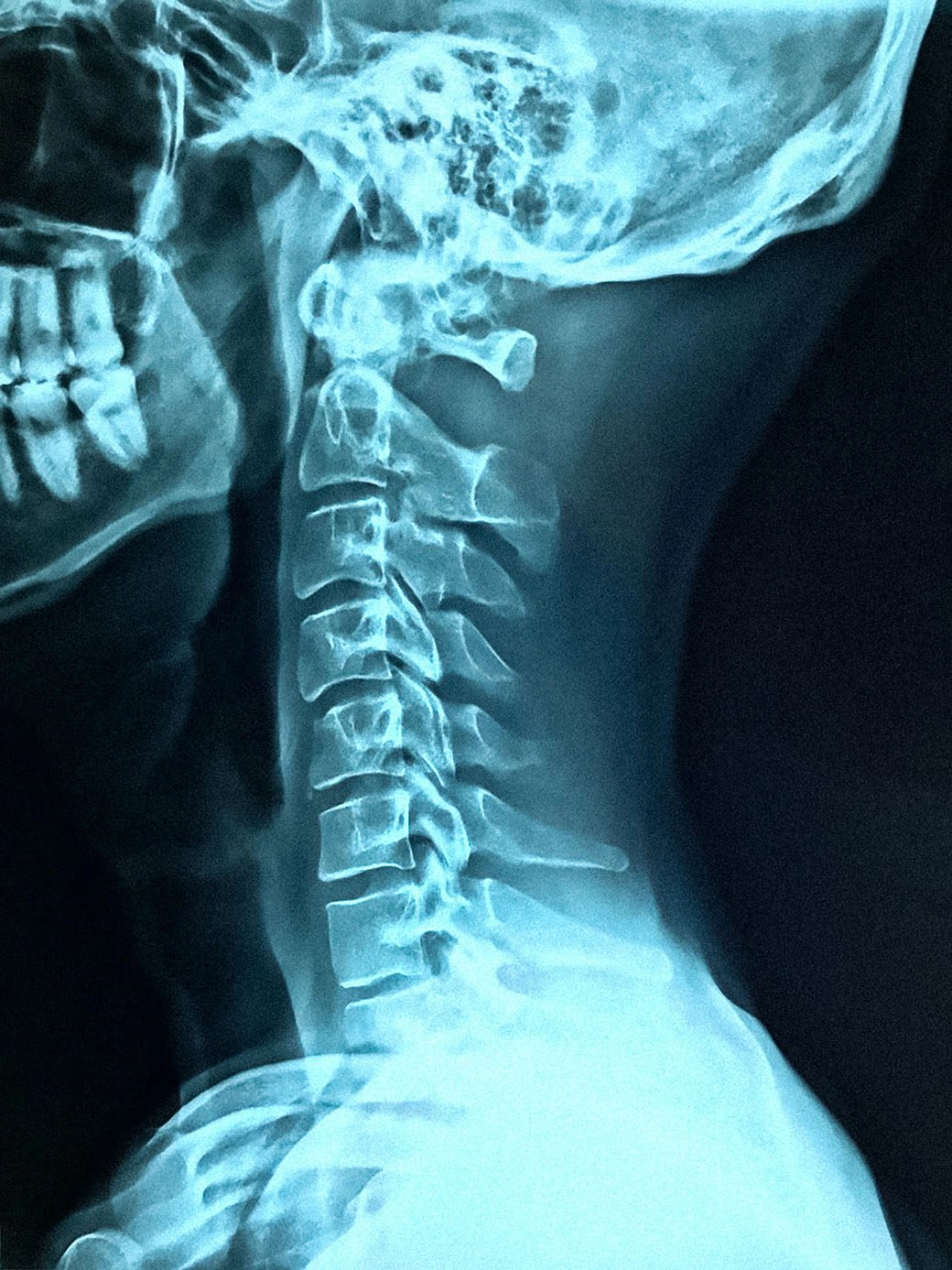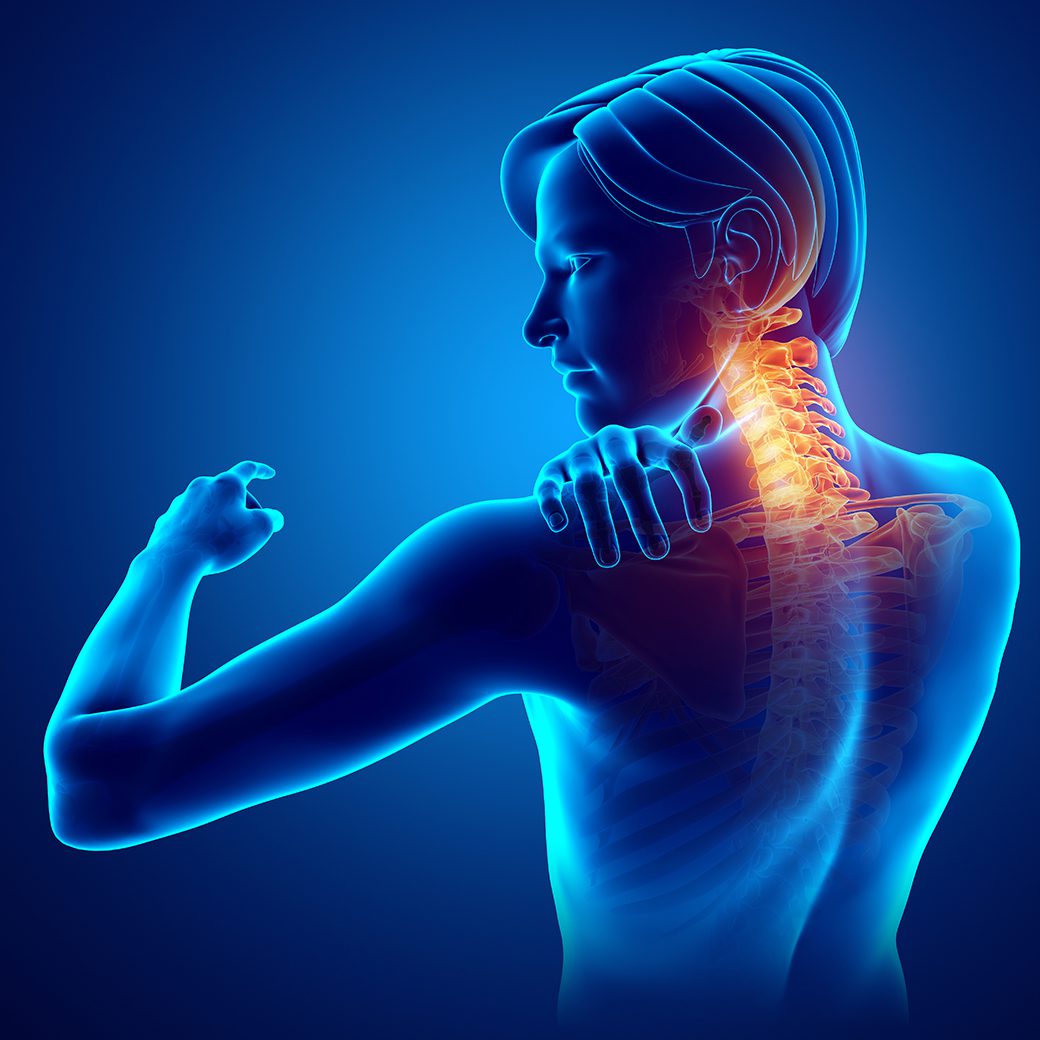While many people think of arthritis as affecting only the hands and knees, older adults often suffer from osteoarthritis of the spinal column.
Osteoarthritis results from everyday wear and tear on the tendons and joints of the body. After 40, this type of arthritis can be quite common. Any joint in the body can be affected, and that includes the spine.

Common Symptoms or Signs of Rheumatoid Arthritis of the Spine
While many of the symptoms are similar, there are a few differences including:
✓ Morning stiffness or pain lasting longer than 30 minutes
✓ Pain, stiffness, and swelling
✓ Feelings of fatigue
✓ Other symptoms such as fever or general feelings of being unwell
Can a Chiropractor Diagnose Arthritis of the Spine?
Yes, they can. Your chiropractor will use a three-step process to determine if you have spinal arthritis. These steps include:
1) Conduct a Complete Medical History
This will include a description of your symptoms, how long you have experienced them, if they have changed over time and when the symptoms appear to be worse or what makes them better. Your lifestyle habits will be discussed, as well as your family history, and what, if anything, have you tried for pain relief.
2) Perform a Comprehensive Physical Exam
This will include an inspection of the spine and neck, range of motion, muscle strength, and might even include a few exercises to determine the exact location of the problem or if certain movements cause more pain than others.
3) X-Rays
Chances are that the doctor will order x-rays to look for damage in the joints of the neck and spine. X-rays do show bone spurs, loss of cartilage, and compression fractures if any. Almost everyone over 60 will have some degenerative changes but this doesn’t mean they have osteoarthritis.
If your chiropractor believes you might have rheumatoid arthritis, he will refer you to the appropriate medical professional for further testing.
Can a Chiropractor Help with Arthritis of the Spine?
In a word, yes! Your local chiropractor is a professionally trained doctor who specializes in problems and issues involving the spine, including arthritis of the spine. Studies, such as this one, have shown that regular chiropractic care can be of tremendous benefit. Anchorage residents with spinal arthritis are amazed by the free 1-Hour massage certificate we offer after a chiropractic session.
[fl_builder_insert_layout id=”25641″]
Is There a Cure for These Types of Spinal Arthritis?
There are no cures for either type of arthritis, only management of pain and other symptoms.
There are ways, however, that your chiropractor can work with you and your primary care physician to provide natural, drug-free therapies to reduce pain, improve range of motion, and increase endurance and flexibility in a completely safe manner.
Can Chiropractic Care Help Arthritis in the Neck?
In a word, yes. While many of us think of the neck as being a separate part from the back, the neck, called the cervical spine, is also a part of your spinal column and there is much that a chiropractor can do in the way of pain relief and restoration of flexibility.

Top 5 Ways Your Chiropractor Can Provide Relief and Restoration
Your chiropractor cannot prescribe the pharmaceutical medication needed for those suffering from rheumatoid arthritis, however, even for these patients, chiropractic care for rheumatoid arthritis patients has a great deal to offer.
For those with spinal osteoarthritis and chiropractic care can use adjustments and other methods to ease the pressure on the joints of the spine and offer other valuable services and advice.
1) Spinal Manipulation
For those suffering from chronic pain, stiffness, or other symptoms, chiropractic care can go a long way towards offering relief from these issues.
Joint dysfunction in the spine causes pain. Manipulation of the joints, or spinal adjustments, can offer much-needed relief from chronic or serious episodes of pain from arthritis.
Since arthritis is a joint dysfunction issue, it’s not surprising to find that patients respond well to these types of manipulations. In some cases, a less forceful manner of manipulating the spine might be used. This is called gravity traction. It’s more of a gentle pull, rather than a stronger push.
Many patients with spinal arthritis find that regular spinal manipulation helps to reduce their pain levels as well as increase range of motion.
2) Low-Level Laser Therapy (LLLT)
Your chiropractor might also take advantage of laser therapy, sometimes referred to as “cold laser” therapy. This treatment has been shown to be extremely safe, painless, and very effective in treating chronic pain, as well as stimulate healing. While it can’t cure arthritis, it can encourage the body to be the best that it can be.
Laser therapy offers drug-free pain relief in a safe, non-invasive manner. It is often used for back and neck pain, osteoarthritis in all joints of the body, and chronic pain sufferers.
The lights from this low-level laser offer many benefits including:
- Rapid cell repair
- Stimulated nerve function
- Anti-inflammatory response
- Reduced scar tissue formation
- Increased blood flow to the area
- Reduced pain
- Reduced swelling
Low-level laser therapy is so effective that many people find they can stop taking over-the-counter pain medication after just a few visits.
3) Rehabilitative Exercises
Your chiropractor will also show you how to do exercises and physical rehabilitative exercises to help keep the spine flexible and strong.
Although it sounds counter-intuitive to exercise an area suffering from overuse, it is well known that one of the most effective means of pain relief is through strengthening exercises.
A few of the exercises your doctor might recommend include:
✓ Low-impact aerobics
✓ Swimming
✓ Range of motion exercises for the back
✓ Neck and back exercises to increase strength
✓ Yoga for improved flexibility
The doctor will explain the full program he believes will work best for you.
4) Chiropractic Massage, Ultrasound, & Other Therapies
Besides chiropractic adjustments, laser therapy, rehabilitative exercises, your chiropractor will probably use other types of therapies which are known to help with spinal arthritis, including:
✓ Chiropractic massage
✓ Heat or ice therapy
✓ Ultrasound
Low-frequency electronic stimulation, known as TENS device
Every person is different so the plan your chiropractor makes will be exclusive to you and your unique situation.
5) Lifestyle Changes & Nutritional Advice
We won’t deny that spinal arthritis just plain stinks. While it’s not fun, a comprehensive treatment plan can make it feel like a minor problem, rather than a major one. One thing your chiropractor might suggest is a few lifestyle and dietary changes, including:
✓ Losing weight or maintaining a healthy weight. More weight means more strain on the joints.
✓ Stopping smoking
✓ Staying hydrated
✓ Consuming supplements known to fight inflammation, such as magnesium, green tea, and fish oil
✓ Applying heat packs when the weather is cold or damp
✓ Learning stress management and relaxation or meditation techniques
✓ Limiting the consumption of alcohol and caffeine
✓ Learning good body mechanics in everyday life to limit pressure on the spine
✓ Consuming an anti-inflammatory diet

There are other types of non-traditional therapies that have their roots in ancient folk medicine, including mud baths, hot mineral spring baths, wearing copper-infused clothing or drinking certain types of herbal teas. While there is no scientific evidence that shows that these can help in any way, there is probably no harm in trying them. Discuss these with your doctor and chiropractor first.
What is Osteoarthritis?
This common disorder of the joints affects about 27 million Americans. While it can affect any joint, it is most commonly seen in the knees, hips, neck, fingers, and lower back.
Cartilage is a rubbery type of material that covers the end of each bone. This provides a cushion between bones as well as a slippery surface for a smooth joint operation.
When cartilage breaks down, it causes problems and pain when moving the affected joint. Over time, bones can actually rub one another, causing the growth of what are called bone spurs.
Common Symptoms or Signs of Spinal Osteoarthritis
Some of the more common symptoms of osteoarthritis of the spine include:
✓ Stiffness and/or pain in the neck or back
✓ Weakness or numbness in the arms or legs
✓ Back or neck pain that is worse after activity or long periods of sitting
✓ A crunchy feeling when moving
✓ Reduced range of motion
✓ Difficulty bending over or turning the head
What is the Difference Between Osteoarthritis and Rheumatoid Arthritis?
While these two might sound similar, they are, and they aren’t. In the early stages of rheumatoid arthritis, many people are misdiagnosed with osteoarthritis, since both share similar symptoms.
Rheumatoid arthritis is a complex disease whereas osteoarthritis comes from the everyday use of the body. Rheumatoid arthritis is an autoimmune disease that causes inflammation of the joints. While osteoarthritis can cause inflammation, but not to the degree that rheumatoid arthritis does.
Osteoarthritis is common and affects about 27 million people in America. It often occurs after age 65 but can start as young as 40.
Rheumatoid arthritis affects only 1.3 million people and it can develop anytime, but mostly after 30 years of age.
What Are the Causes of Osteoarthritis?
This common condition is caused by the everyday wear and tear of using the body. This is a chronic condition that gets worse as we age. Some sports players and certain jobs with repetitive motions can lead to this condition as well as old injuries that don’t heal correctly. There is a genetic risk factor as well, meaning that if one of your parents had this disorder, you have a greater risk of being afflicted with it.
What Are the Causes of Rheumatoid Arthritis?
Since rheumatoid arthritis is an autoimmune disease, the exact cause behind this is unknown. This type of arthritis is caused when a person’s own antibodies attack the healthy joint tissues of the body.
Most scientists believe the cause is genetic, but it could also be an environmental one or a hormonal factor since this condition is more common in women than men.









